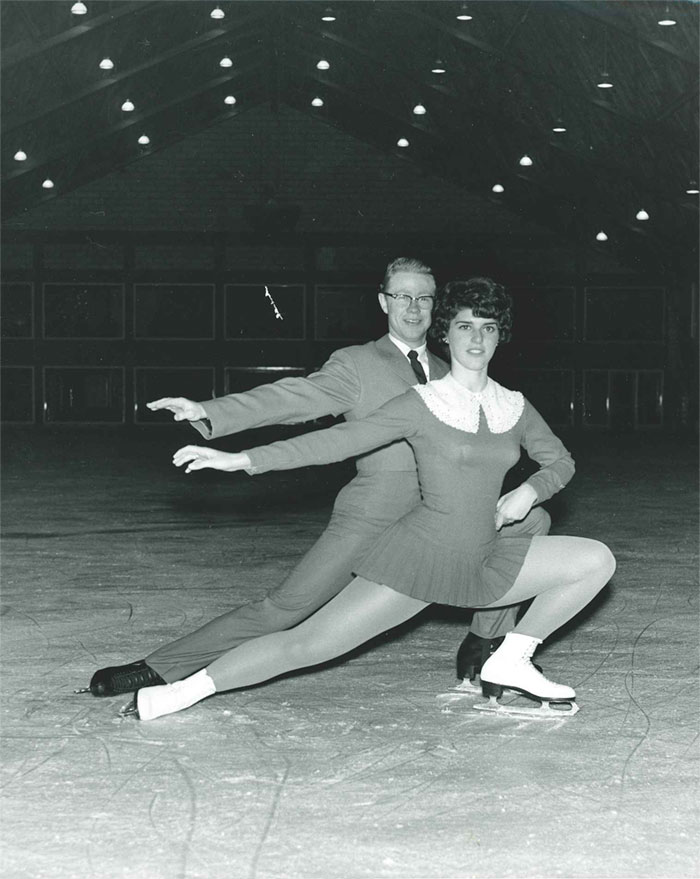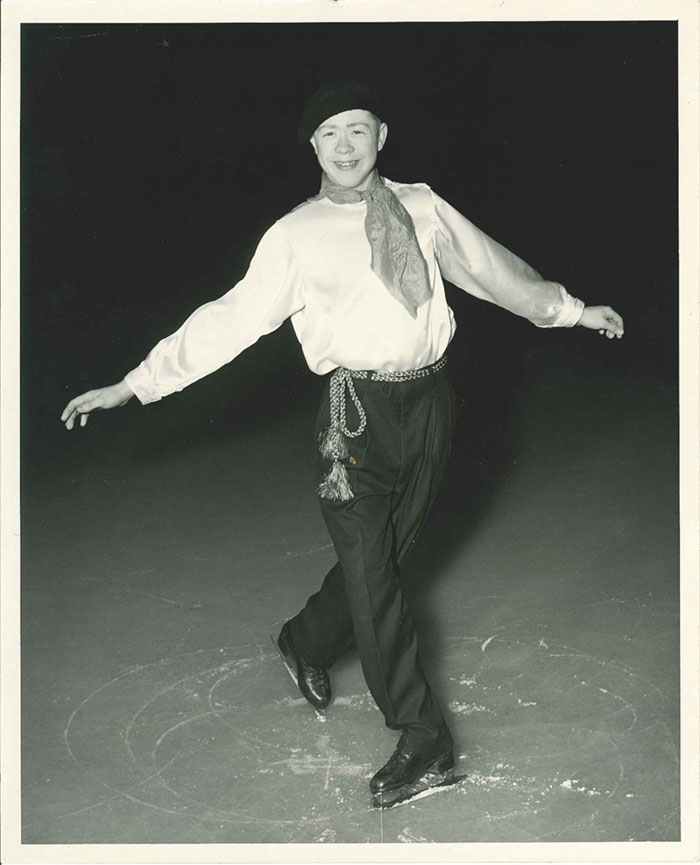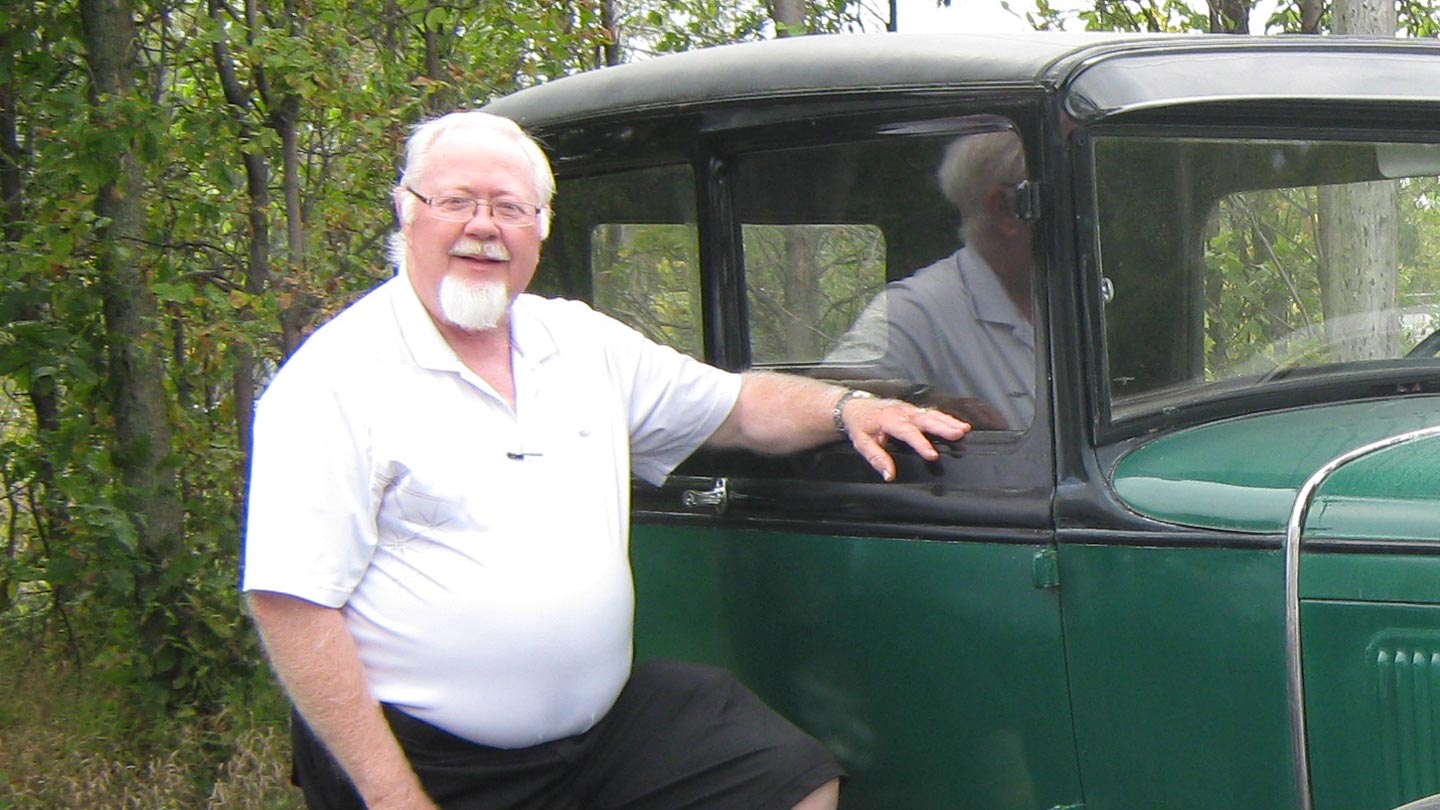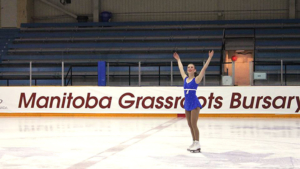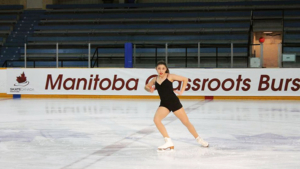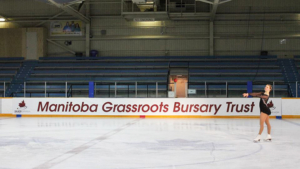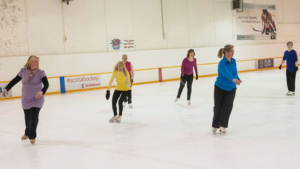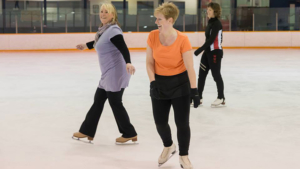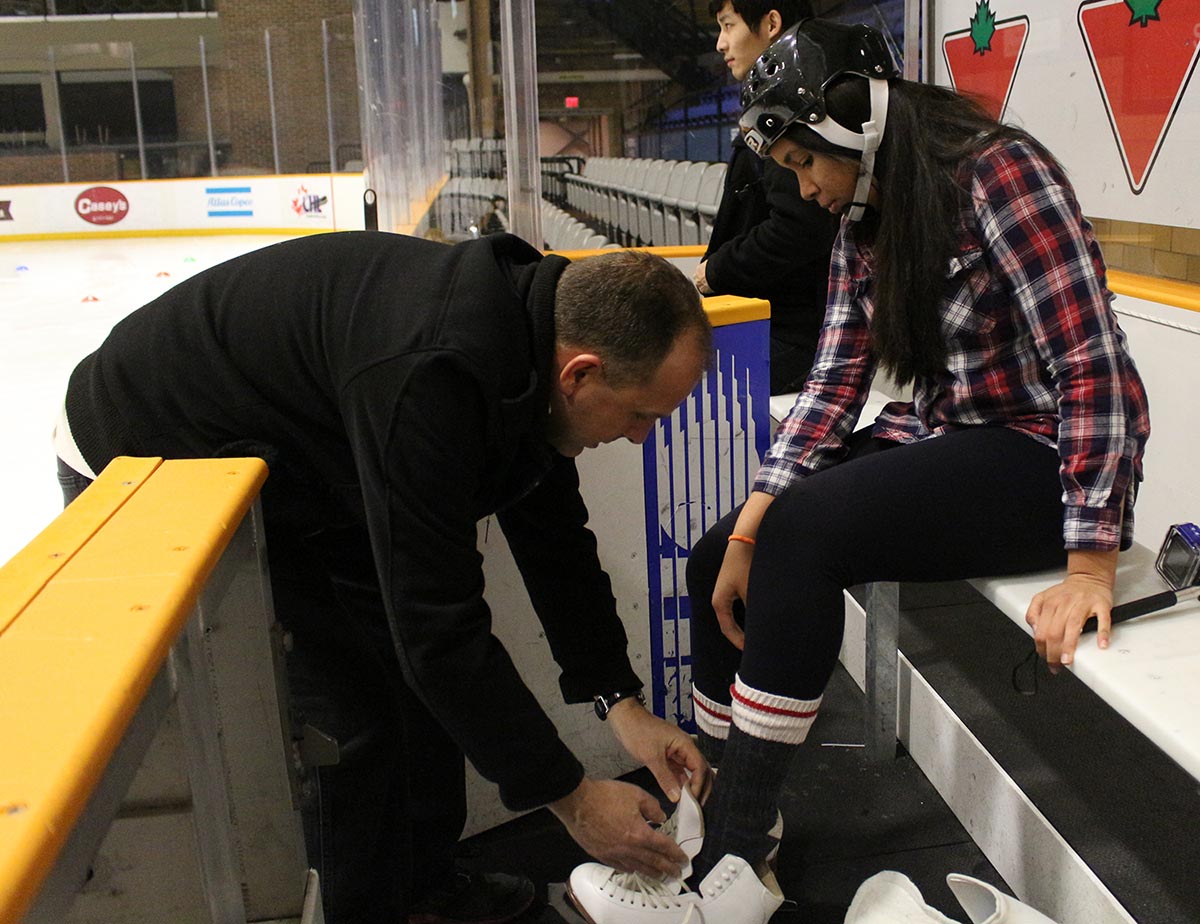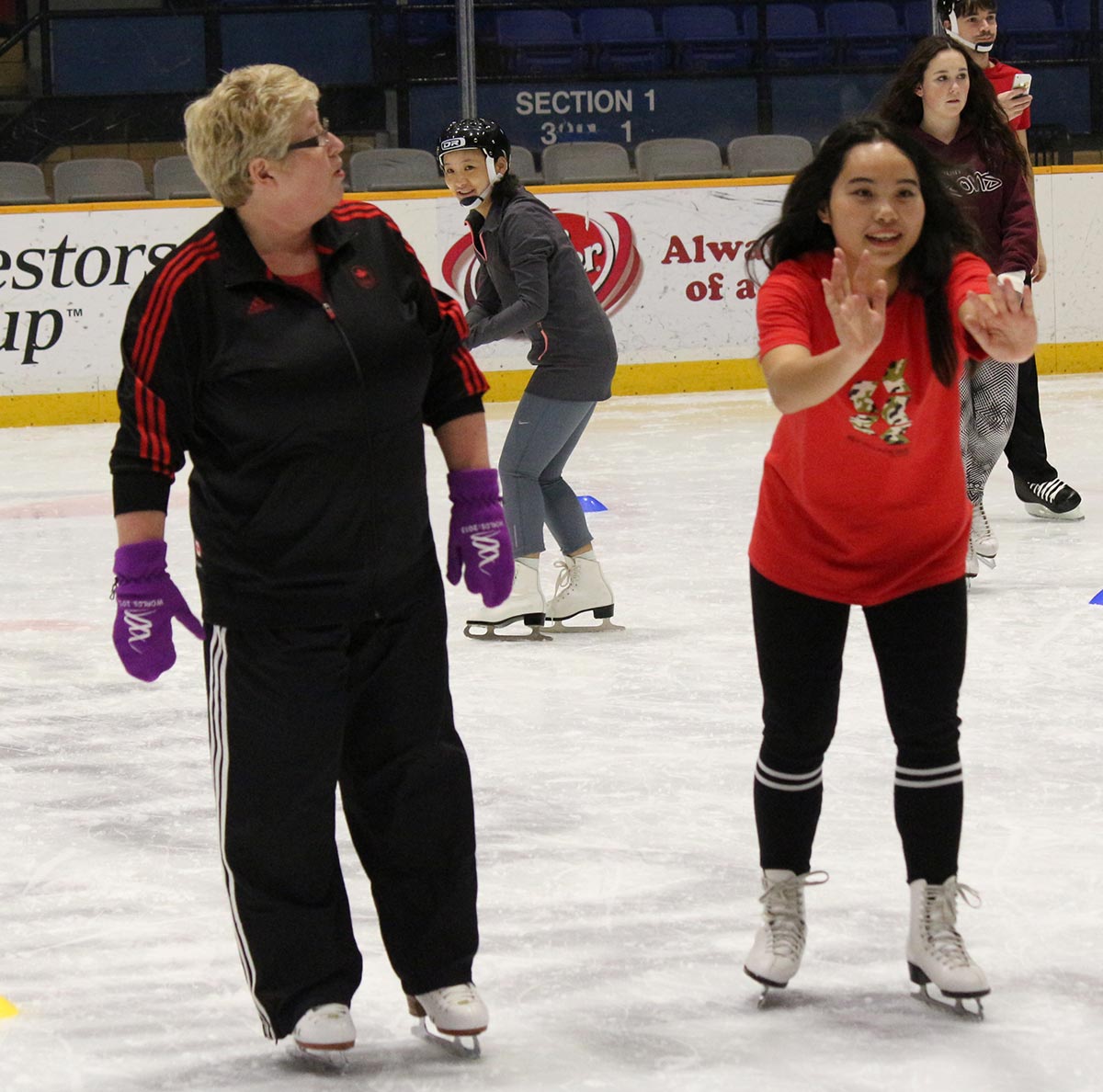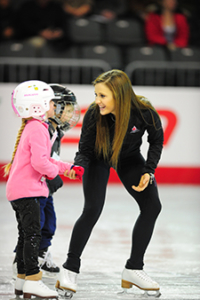For super volunteer Fran McLellan, her interest in community activities began in her hometown of Ingersoll, Ontario, with parents who were strong role models when it came to offering their time to help.
Volunteering was definitely a community and family priority.
Fran remembers being inspired by the Director of the local YMCA, Al Clark. “He encouraged me to form ‘Teen Town’ and organize Friday Night Dances at the Y. He also helped me to swim competitively and hired me to teach and lifeguard at our local pool.”
That experience and others set the stage for Fran’s love of sports. “We swam in the summer and skated in the winter,” says Fran. “Along with my older brother and two younger sisters, we started skating at a very young age. My brother played hockey and the girls took figure skating lessons. I remember our mother driving us to early morning ‘patch’ lessons and then getting us to school on time.”
Many of her fondest memories revolve around skating in the club Ice Shows and wearing the wonderful costumes. “Some of the costumes were rented from the Unionville Skating Club. I also remember one year when our coach, Liliane de Kresz, skated a solo to the music Sabre Dance. I’ve never forgotten how fast she could skate!”
Growing up, Fran was dedicated to advancing her own skating skills, eventually earning her silver medal in dance. Once married, she and her husband John moved to Oakville where the Oakville Skating Club was a major star in the community. Fran thinks back, “Coming to Oakville, one of my first recollections was the parade welcoming home Maria and Otto Jelinek from the 1962 World Championships in Prague with their gold medal in pairs figure skating.”
That event sparked her interest in the Oakville Skating Club.
“One day I got brave enough to walk into the Club to see about registering our children for lessons and was pleasantly surprised at how easy it was to sign up. Louis and Marijane Stong were their first coaches – group lessons – three times a week.”
While Fran continued to skate herself and take on new volunteer club responsibilities at the same time, her children were following in her skating footsteps, Michael in hockey and the girls in figure skating. During this time, Fran was also discovering another side to the sport, precision skating, now called Synchronized Skating.
It was at an ACGM where she attended a precision workshop and listened to advocate Elizabeth Swan. “She was so keen to talk about this new discipline that everyone in the room became excited about taking the information back to their clubs.”
Realizing that not every figure skater could become a Barbara Ann Scott, Fran liked the team element. “There were very few team sports for girls when I was growing up,” admits Fran. “Finally, with precision, the girls and I had something we could do together!”
Fran remembers the beginning of the sport. “At first the teams were very large, 24 to 32 skaters, so it meant a lot of individuals found a new home at the rink. The skaters could set new goals, travel as a team to overnight competitions and share in the expenses.”
Fran was so attracted to precision, she continued to skate competitively for 25 years on adult teams and even sometimes on teams with her daughters. Yes, both Laura and Leanne caught the precision bug too, skating on teams in Oakville and in Burlington all while pursuing more traditional skating honors, Laura eventually earning her gold medal in Figures, Free Skate and Dance and Leanne earning her gold medal in Dance.
“Laura started judging when she was sixteen and is qualified to judge all disciplines – singles, pairs, dance and synchro,” boasts Fran. “At the age of 9 Leanne was an alternate on the senior team in Oakville and continued to participate in the sport until she retired at the age of 34.”
Fran recalls her proudest moment as a synchro skater. “It was at Synchro Nationals in 1994 in Verdun, Quebec and our Oakville adult team, skating to Pomp and Circumstance, earned a bronze medal. I believe that was the first time a mother and two daughters skated together and won a national medal.”
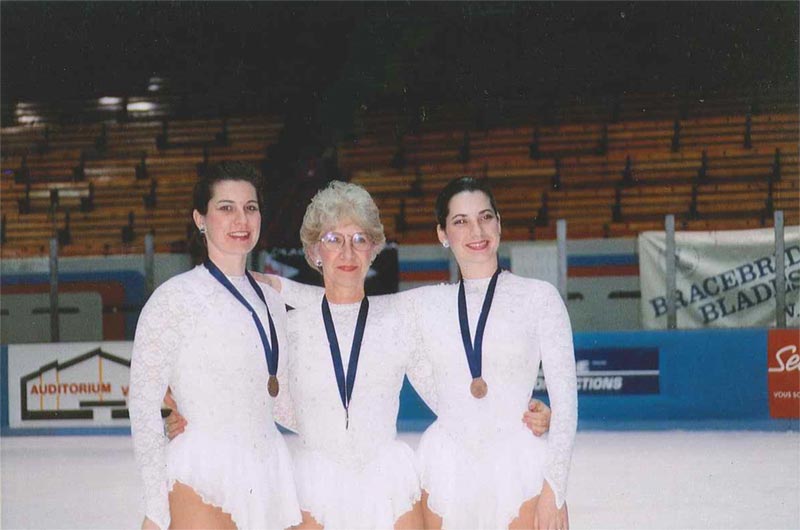
1994 Adult Nationals – Fran McLellan
Once Fran hung up her skates, her transition to becoming a full-time volunteer was completely natural. Although she’s tiny in stature, her infectious spirit and endless enthusiasm meant she could take on jobs and get things done.
“Somehow it just happens. One day you’re driving your kids to the rink and the next thing you know you’re attending planning meetings and voting on budgets.”
Skating wasn’t the only activity on Fran’s list of priorities. “I volunteered at our high school, church and the YMCA, helped out with all the activities at school, volunteered at our hospital and the IODE, sat on several town committees and was a founding member of the Oakville Sports Hall of Fame.”
But it was when she was appointed Accreditation Director for the Winter Special Olympics that Fran found one of her most challenging and rewarding experiences.
“My committee accredited over 10,000 participants, officials, managers, chaperones, entertainers, food vendors, directors and special guests. It was a year-long process working closely with the Kodak people to develop the photo ID system. The experience and the people we met along the way were priceless.”
Back in the rink, Fran devoted countless hours volunteering at local, regional, provincial, national and international skating competitions. “At most of the synchro competitions I was judging, skating and managing. Always a challenge for the Tech Rep,” Fran laughs. “I had to make sure I removed the headset before going back on the panel!”
Today as Business Manager for Canada’s World Champions, NEXXICE, Fran is looking forward to the sport’s acceptance into Olympic competition. “My prediction is 2022 in Beijing, China. And now this year for the first time Synchro will be part of the Grand Prix Final in Barcelona. As the old saying goes, we’ve come a long way baby!”
For her vision and commitment, Fran has been recognized by both Oakville and her skating community. She was inducted into the Oakville Sports Hall of Fame this year and has been the recipient of the Elizabeth Swan Memorial Award for her contributions to synchro skating. While delighted with these honors, Fran’s proudest moment came after the 2013 World Synchro Championships in Boston when NEXXICE presented her with the Team Spirit Award.
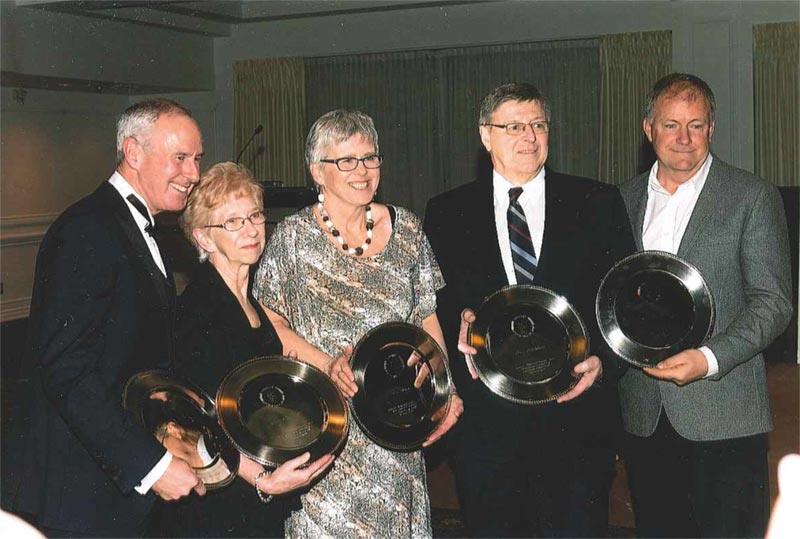
Oakville Sports Hall of Fame Induction
Over the years Fran’s name has become synonymous with volunteering. “I’ve learned that it takes a ‘team’ effort to make things happen. I’ve gained a lot of friends – young and old.”
For Fran, volunteering has worked two ways. While she’s given her time and dedication, volunteering has given her a lot in return. “It’s kept me grounded,” says Fran.
Her advice? “Get involved and stay involved. One day you’ll be glad you did and the memories will live with you forever.”
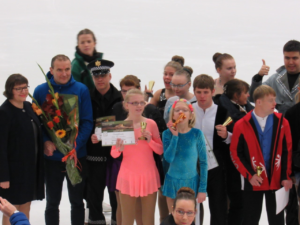 The spirit of sport took centre stage as athletes from Iceland, Canada, Great Britain, Finland and the United States converged in Reykjavík, Iceland for the 2016 IceCup from November 4-6.
The spirit of sport took centre stage as athletes from Iceland, Canada, Great Britain, Finland and the United States converged in Reykjavík, Iceland for the 2016 IceCup from November 4-6.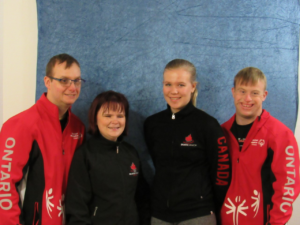 Organized by the Ösp Sports Club with the support of Special Olympics Iceland, IceCup, sanctioned by Skate Canada, featured competition in singles, pairs and unified pairs. A coaching workshop was also held for coaches with athletes attending the Special Olympics World Winter Games.
Organized by the Ösp Sports Club with the support of Special Olympics Iceland, IceCup, sanctioned by Skate Canada, featured competition in singles, pairs and unified pairs. A coaching workshop was also held for coaches with athletes attending the Special Olympics World Winter Games.
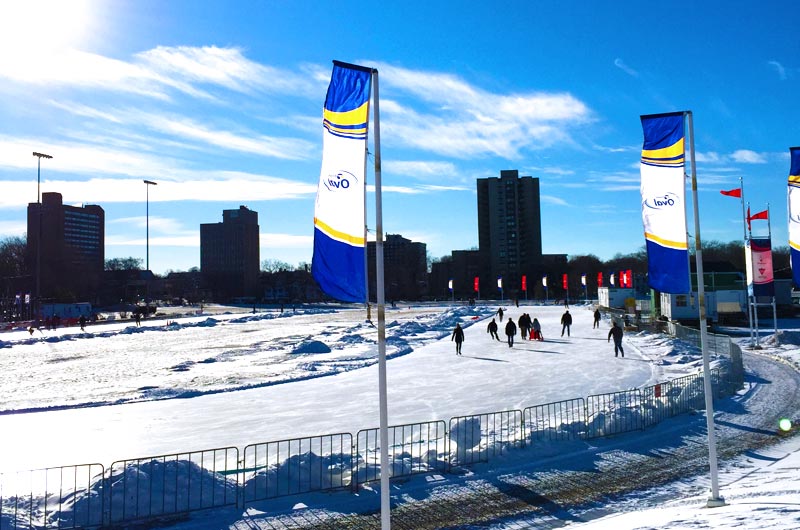
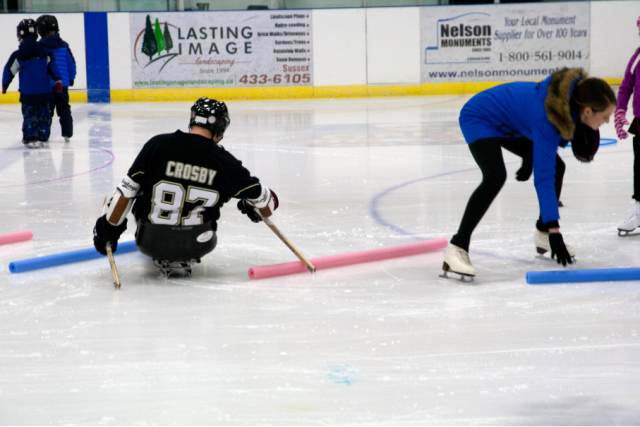
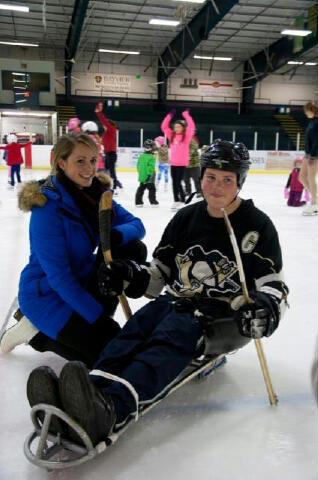 Sporting his Crosby jersey, Noah takes to the ice twice a week to work with Graham. Sitting in the stands, Tammy Robichaud cheers her son on as he makes his way around the modified CanSkate circuits, a mother sharing a cloud with her son as they live a dream.
Sporting his Crosby jersey, Noah takes to the ice twice a week to work with Graham. Sitting in the stands, Tammy Robichaud cheers her son on as he makes his way around the modified CanSkate circuits, a mother sharing a cloud with her son as they live a dream.


